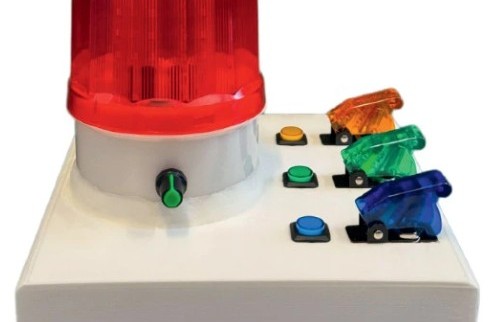Ali Yamini
MASc, ECE, University of Waterloo, 2025.
Ali is a software engineer and researcher at the Social and Intelligent Robotics Research Lab. He led the creation of Mirrly—a humanoid robot for child-robot interaction (CRI)—co-founded two software startups, and has delivered systems in swarm navigation with reinforcement learning, image processing, and full-stack web and mobile applications.
LinkedIn G. Scholar Github UWaterloo
ali.yamini at uwaterloo dot ca

.jpg)
Analyzing Task Compliance With Interventions From a Novel Robotic Platform
Ali Yamini, Kerstin Dautenhahn
In process for submission
Research by Design: Mirrly a Humanoid Robot for Child-Robot Interaction
Ali Yamini, Ana Djurkovic, Vanessa Italia Anne Hughes, Cory Smith, Brandon J DeHart, Kerstin Dautenhahn
Proceedings of the 12th International Conference on Human-Agent Interaction 2024
Webpage •

What Makes an Educational Robot Game Fun? Framework Analysis of Children’s Design Ideas
Elaheh Sanoubari, John Edison Muñoz, Ali Yamini, Neil Randall, Kerstin Dautenhahn
International Conference on Social Robotics 2024
★ Best Presentation Award at ICSR 2024 ★
Webpage •

Autonomous Navigation System Using Reinforcement Learning For Swarm Of Drones
Ali Yamini, Mohammad Divband
University of Southampton

Fog Computing in IoT-Based Healthcare Systems
Azadeh Zamanifar, Ali Yamini
Cloud Computing in Medical Imaging 2023
Auerbach Publications
Webpage

IoT for Smart Environment Applications
Azadeh Zamanifar, Ali Yamini
Internet of Things for Smart Environments 2022
Springer International Publishing
Webpage

A new machine learning-based healthcare monitoring model for student’s condition diagnosis in Internet of Things environment
Alireza Souri, Marwan Yassin Ghafour, Aram Mahmood Ahmed, Fatemeh Safara, Ali Yamini, Mahdi Hoseyninezhad
Soft Computing 2020
Springer Berlin Heidelberg
Webpage
2024
UIUC CSL Student Conference2023
EMNLP Workshop on RoboNLP2024
Design Engineering | Researchers develop a social robot to aid ‘lazy eye’ treatment2023
ECE 108 - Discrete Mathematics and Logic (Winter Term)2024
ECE 108 - Discrete Mathematics and Logic (Winter Term)2025
ECE 108 - Discrete Mathematics and Logic II (Winter Term)